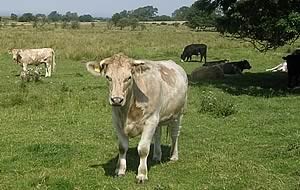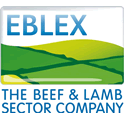 |
|||||||||
|
|||||||||||||||||||
|
|
The Return of Over Thirty Month
Cattle to the Beef Market Presentation by Duncan Sinclair Senior Beef Economist with the English Beef and Lamb Executive to The British Cattle Breeders’ Club British Cattle Conference, 2006 - Health, Wealth and Happiness - on 23rd - 25th January 2006 at the Hawkstone Park Hotel, Weston-under-Redcastle, Shrewsbury in Shropshire.
After almost 10 years, and several false dawns, Monday, November 7, 2005 was a watershed for the beef industry. This was the first day since March 20, 1996 that cattle aged over thirty months could go into the food chain. By late-January 28 plants had been approved to process cattle aged over thirty months with a further three in Northern Ireland. More are expected to gain approval in the coming months. Cow slaughterings for the food chain have been relatively modest since the OTM rule changed. From a total of 958 head in the first week (w/e 12 November) they gradually increased to more than 3,300 head per week by mid-December. Numbers have recovered post Christmas to total 3,430 head by w/e 14 January. Over the period, the Over Thirty Month Scheme (OTMS) continued to operate and the vast majority of cows were disposed of by this means, rather than sold back into the food chain. In the nine weeks following the OTM rule change, 88% of cows were disposed of into the OTMS and only 12% re-entered the food chain. The industry is now facing a critical period as the OTMS ended on 22 January and all cows born after July 1996 must be sold into the food chain. Market Impact With demand for beef strong in the run up to Christmas, the change in the OTM rule coupled with the modest number of cows which were slaughtered for the food chain meant little adverse impact on prime cattle values. These remained firm throughout the period and at 193p/kg deadweight during December were up 17p/kg or 10% compared with December 2004. Immediately following OTM rule change, only better quality animals have been sold for human consumption while the OTMS has been used for the poorer ones. Prices recorded at auction markets show a clear differential for beef cross cows when compared to dairy breeds . While dairy breeds have averaged 48-52p/kg liveweight beef bred cows have averaged 55-60p/kg liveweight, an average difference of 7-8p/kg liveweight. Deadweight cow prices also confirm a differential according to the quality of the animal. These have broadly ranged from 100-110p/kg deadweight for P/-O conformation animals up to125-35p/kg deadweight for R grade cows. This compares favourably with the OTMS compensation rate during December of 43.7p/kg liveweight and 87.3p/kg deadweight. Challenges ahead The immediate challenge is that with the ending of the OTMS on 22 January there is the prospect of a significant increase in availability of domestic cow beef. The concern is further heightened by the fact that exporting a proportion of this beef will not be possible at least until April and possibly May. It is vitally important that the major retailers accept this product into their supply chains if not for part of their retail offering at least using it as an ingredient in their processed products such as beef burgers or beef based ready meals. There is scope for significant volumes of this product to be used by the major burger manufacturers and the further processing industry. If this can be achieved in the coming weeks and if, at the same time, import volumes are adjusted downwards then the impact not only on the cow price but possibly more importantly on the prime cattle trade can be largely mitigated. If this does not happen, the likely outcome will be for the market to come under extreme pressure and, if it does, then the EU Commission’s promise of the introduction of measures to support the beef market will need to be activated swiftly. However there are a number of factors which, if acted upon, could reduce the potential pressure on price the industry may face in the coming weeks:
Provided a number of these factors are acted upon then this should allow enough time for the market to adjust and adapt without undermining confidence. Under the new conditions, the move from a flat rate pricing structure in the form of OTMS compensation to a pricing structure differentiated by the quality of the animal produced will, on the whole, be most beneficial for the suckler industry. The last piece of the jigsaw needed to fall in place is the removal of the current export restrictions. When all the export restrictions are finally lifted can we truly put the spectre of BSE behind us. With access to a European market of 400 million consumers in 24 other EU member states this will present real opportunities.
|
||||||||||||||||||

|
|
||||||||||||||||||
| home | agri-services | pedigree
pen | news | dairy | beef | machinery property | organisations | site map |
|||||||||||||||||||

